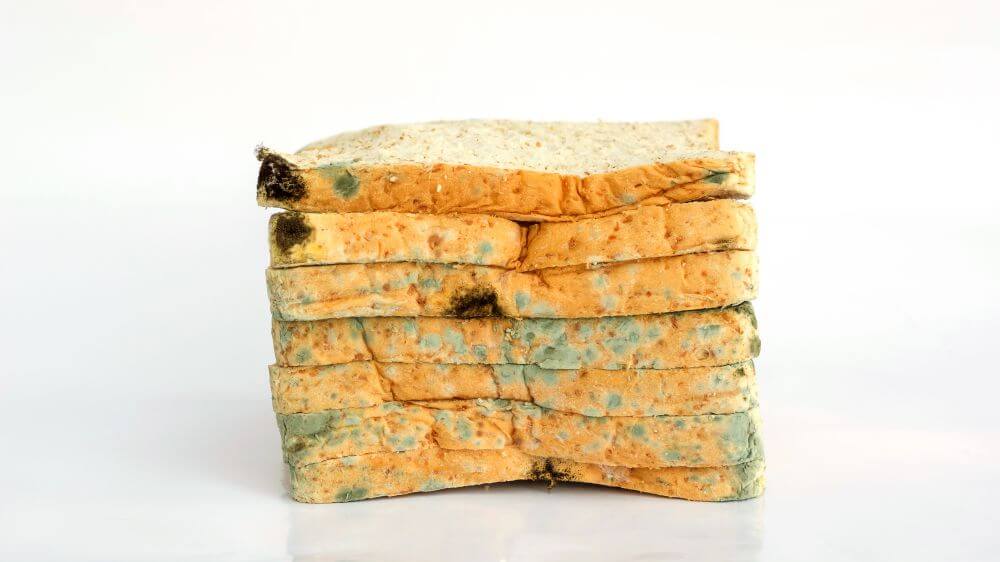Is it safe to eat mouldy food?

There’s nothing more frustrating than going to make a sandwich to find your bread has spots of mould all over it.
Whether black or white, grey or blue, mould is always an unwanted dinner guest.
Unfortunately, our humid climate in New Zealand means that our food is prone to growing mould.
So what should you do if your food is covered in mould?
Love Food Hate Waste spoke to expert Professor Phil Bremer from the University of Otago to get the low down on all things mould.
What is mould?
Mould are microscopic fungi that grow on plant or animal matter. There needs to be a large colony of mould in one place in order for it to be visible to the naked eye.
Mould can cause health issues, so it should not be eaten.
Are all moulds bad?

No. There are some instances where mould is actually beneficial to food – such as the certain types of mould which are added in the cheese making process to make blue cheese, camembert etc. These moulds are safe to eat.
However, moulds can be quite challenging to identify – so unless you are an expert in mycology it is best to assume that all moulds are dangerous, unless it has been intentionally added by the manufacturer as is the case with blue cheese.
If there is mould on my food, do I have to throw it away?
It depends what type of food it is.
If the food is hard like pumpkin and has a low water content, then you can safely cut the mould off, providing you cut at least one centimetre off around where the mould is. This rule of thumb applies to raw pumpkin and other firm fruit and vegetables like carrots and cabbage, hard cheese like cheddar and hard salami.

The high water content of all other foods means that the toxins could have diffused into the food, although you may not be able to see this. You should not eat this food.
What will happen to me if I eat mouldy food?
You are unlikely to become immediately ill in the same way that you might if you got food poisoning from food which contained harmful bacteria.
However, you may feel ill because psychologically you know that you have eaten food with mould on it.
Mould is a carcinogenic, which means it has the potential to cause cancer and other diseases. No one really knows how much mould you would need to consume in order for it to cause health problems, so it is best to avoid eating it.
There is mould on one slice of bread. Is it safe to eat the rest of the loaf?
Unfortunately not.
Visible mould on a slice or two of bread is a good indicator that there is likely to be invisible mould spores throughout the rest of the loaf, so you should put the entire loaf into your compost bin.
Don’t feed mouldy bread to ducks either! Whilst they might gooble it up in the long term it will cause them the same kinds of diseases.
Storing bread in the fridge or in the freezer is the best way to keep it from growing mould in New Zealand’s humid climate.
How do I stop mould from growing on my food?

Mould thrives in warm, moist climates with lots of oxygen. So in order to slow or prevent mould growth you need to keep food cold, dry and in air-tight containers.
Some ways to reduce mould growth:
- Keep perishable items in the refrigerator
- Keep dry goods like cereal, rice, biscuits etc in air tight containers or make sure you seal the package tightly
- Keep foods dry by wiping away condensation from containers and packages
- Store vegetables correctly so they don’t sweat
- Keep your kitchen and fridge clean so that you’re not accidentally spreading mould spores.
- Eat leftovers within two days so that mould doesn’t have a chance to grow
Can I put mouldy food into my compost bin?
Yes! It is better to put the mouldy food into the compost bin than your rubbish bin. Mould is a sign that the food is already beginning to decompose.
Make sure any mouldy food is well covered in the compost bin so that your pets won’t accidentally eat them.